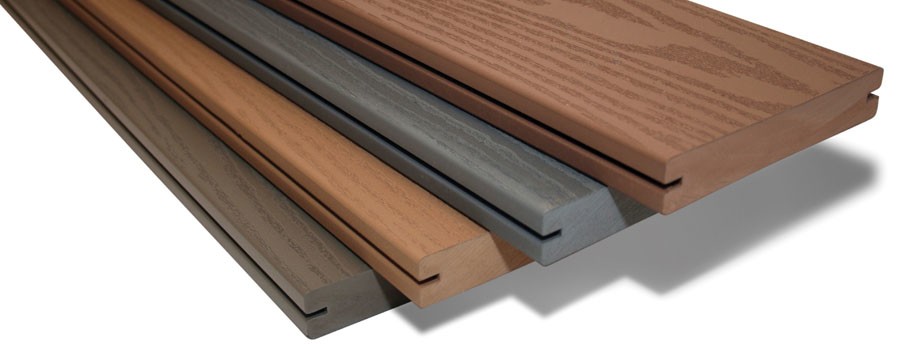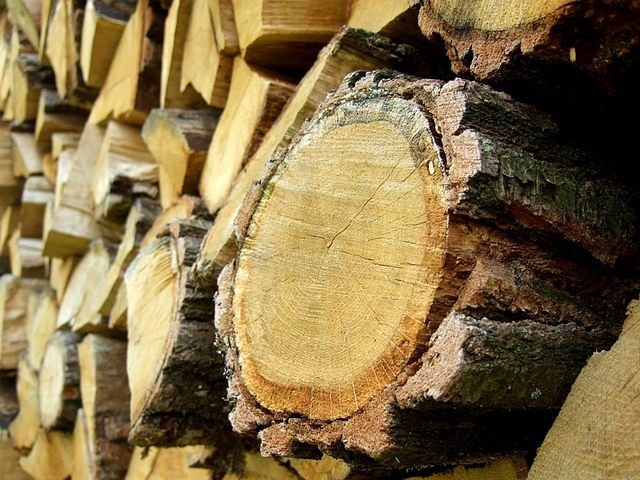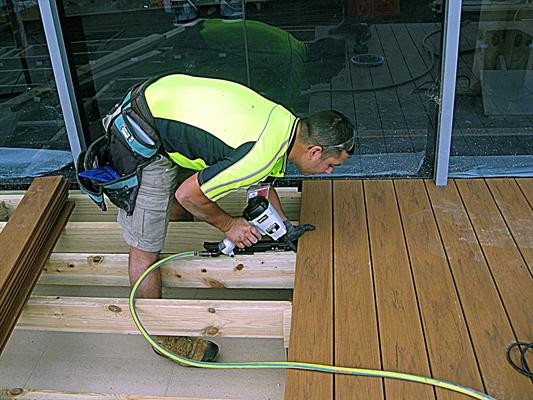Alternative decking products are only 15 years old in Australia, and their use is still nowhere near parity with traditional decking.
But Eamon Hurley from Composite Building Products believes this is all about to change, saying that if trends in the USA continue, the Australian alternative decking market is also set to flourish.
The segment of the decking industry that Hurley predicts will most likely challenge the timber stronghold is Wood Plastic Composite (WPC).
Typically made from a combination of different materials (namely, wood and plastic), composite boards are processed to have the appearance of timber decking, although it is still up for debate whether this has been perfectly achieved.
Types of plastic

There are two main types of plastic used in WPC decking in Australia – high density polyethylene (HDPE) and polyvinyl chloride (PVC).
In general terms HDPE is a softer, more flexible substance, and is the most common plastic used in Australian WPC decking. It can be sourced from recycled materials like milk bottles or pure polymer, both of which have positives and negatives.
Recycled materials, while environmentally friendly, are not chemically designed for exterior use and poor quality recycled HDPE may result in quicker deterioration of the product. Polymer is made from virgin material, i.e. petroleum or oil, so although stronger it fails under sustainability measures.
HDPE is also less fire resistant to timber and suppliers have had to combat this by including fire retardant additives in their manufacturing processes.
PVC is harder, fire resistant and UV resistant, making it the most commonly used exterior plastic; think gutters, down pipes etc. However, its hard surface lends itself to installation difficulties and an underfoot feeling that is dissimilar to real timber.
Types of wood

The wood fibre in WPC also plays an important role in its performance and is used as a filler to reduce the production costs. Any product with more than 55 per cent timber fibre could jeopardise its longevity. Similarly, the type of wood product determines the strength of WPC decking and as with normal decking, hardwood is generally considered to perform better than soft wood fibre in WPC boards.
Manufacturing
Boards are manufactured via an extrusion process, whereby all the ingredients, including colorants, coupling agents, UV stabilizers, blowing agents, foaming agents, and lubricants are placed in a large hopper, mixed up, cooked and squeezed out to the desired board profile.
They come in either hollow or solid boards. Hollow boards have an increased risk of absorbing atmospheric moisture and require a more accurate installation, but are cheaper.
Boards generally come with either an embossed finish or ready for brushing with an additional coating. Brushing removes lubricates in the manufacturing process and can include much needed slip resistant benefits. A downfall of brushing is that it leaves wood fibres exposed to staining which is more difficult to remove than on normal timber decking.
Installation

Different boards require different installation methods and an important thing to look out for in the installation instructions are the materials’ expansion co-efficient.
Some boards will expand and contract as much as 1mm with every 4 degree Celsius fluctuation in temperature. In this case, special screws and fixing systems are used and spacing between boards and abutting walls are larger.
WPC is also weaker than wood so installing a composite deck on a foundation originally used for a wood deck will require more joists.
Other than this, composite boards are installed much the same as traditional decking although most suppliers will recommend pilot holes before drilling or using a nail gun.
What to look for when purchasing
Warranty: length and what’s covered. Most manufacturers require a warranty card that is returned within 30 days.
Composition: pure versus recycled plastics, softwood versus hardwood versus no wood at all.
Expansion Co-Efficient: understand how much the boards will move, especially under Australian summer conditions.
Finish: embossed or brushed, colour. Understand that nearly all WPC will fade over the first 12 weeks after exterior exposure.
Water absorption rate: the lower the better.

